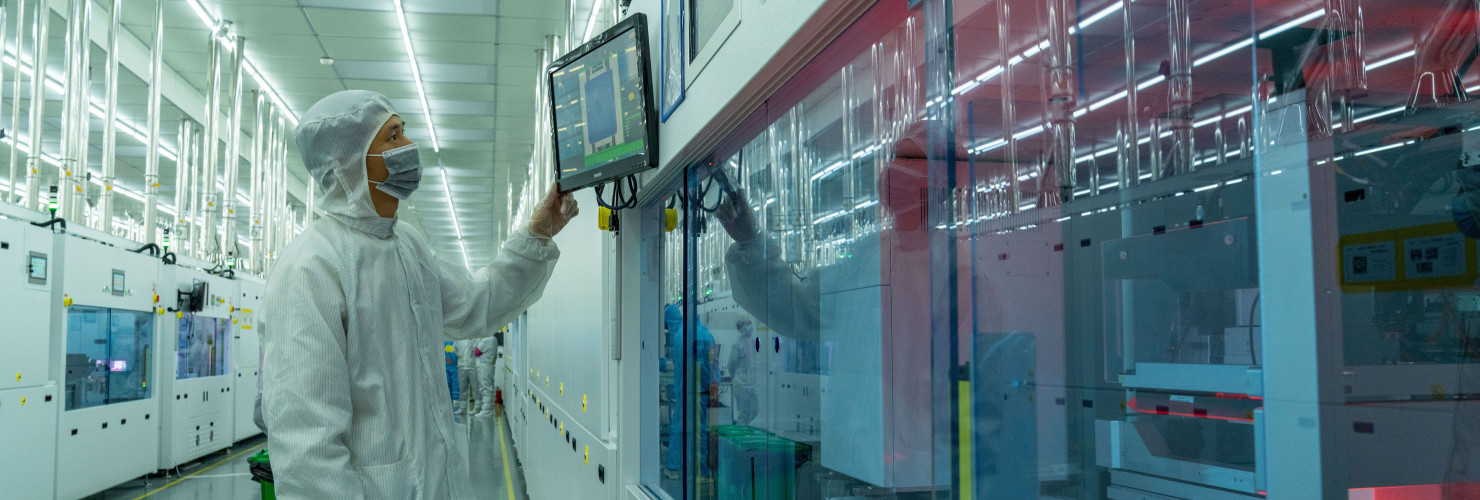

Technology as a factor of production + Battery supply chain + SMEs
MERICS Top 5
1. MOST wants technology to be marketized as a factor of production
At a glance: The Ministry of Science and Technology (MOST) released a special plan to stimulate the creation of an efficient technology market in China, part of a longstanding effort to improve the transfer and conversion of science and technology (S&T) achievements into commercial or practical applications. Key points include:
- By 2025, increase the value of technology transfer and licensing contracts to 5 trillion CNY, almost twice the 2020 figure
- Increase the participation of companies in national S&T and innovation funding programs and support SMEs to license their technology achievements
- Encourage technology trading marketplaces (CTEX, Shanghai’s STEX, Shenzhen Stock Exchange) to establish new institutions and supporting services for trading intellectual property (IP) rights and S&T achievements
- Promote the integration of technology and capital markets, including by reforming the National Guidance Fund for the Transformation of S&T Achievements and guiding venture capital to invest in early-stage technology companies
MERICS comment: Beijing regards technology as a factor of production along with land, capital, labor, and data. Creating a unified market for technology elements, such as S&T resources, research findings and IP, is a major objective of the national economic development and innovation strategies.
The plan restates familiar goals, such as improving IP protection and giving more autonomy to research institutions. This suggests a degree of dissatisfaction with the progress so far. More institutional reforms are needed to support the strategic goal of “S&T self-reliance” (科技自立自强). Technology research and development shall better serve strategic needs along critical industrial supply chains, and S&T projects will be evaluated based on whether they solve bottlenecks in “key and core technologies” (关键核心技术).
Beijing’s technology transfer policies seek to integrate and exploit IP, talent, and innovation resources not just within the country, but also across borders. Besides building new technology trading hubs in Beijing, Shanghai, and the Greater Bay Area, the plan talks about establishing new international S&T cooperation bases and technology transfer institutions in China. While European companies will welcome further reform of China’s patent and technology licensing system, they should remain acutely aware of IP risks.
Article: “14th Five-Year” Special Plan for the Technology Factors Market (“十四五”技术要素市场专项规划) (Link)
Issuing body: MOST
Date: October 25, 2022
2. Greater regulatory oversight to stabilize China’s battery supply chain
At a glance: The Ministry of Industry and Information Technology (MIIT) and State Administration for Market Regulation (SAMR) released a notice to reduce imbalances between supply and demand in China’s lithium-ion battery sector. Because lithium-ion batteries are the key component of electric vehicle (EV) batteries, maintaining stability in their pricing is key for a healthy EV sector. Local MIIT and SAMR departments are tasked to:
- Prevent disorderly production capacity expansion of new battery projects
- Improve coordination among different parts of the battery supply chain, from raw material mining over processing to battery production
- Strengthen supply chain supervision to deal with hoarding, price gouging, unfair competition and quality issues
- Promote monitoring and early warning systems through the comprehensive use of big data, statistics and industry surveys
MERICS comment: This notice indicates that Beijing will intervene more strongly in the battery supply chain. Policymakers are worried about global raw material price increases and fluctuations which could slow down China’s globally leading EV sector. Batteries account for around 40 percent of an EV’s value and rising battery prices (caused by high lithium prices, which tripled in 2022) could trickle down to consumers and stymy demand.
After local governments jostled to attract investment from companies like CATL or BYD, provincial MIIT and SAMR departments are now tasked to supervise the sector more stringently, which could slow down the expansion of new battery plants. The government’s moves to curb overproduction reflect a familiar pattern in China’s industrial policy, the same process occurred for electric vehicle makers.
China’s battery sector remains dominated by private firms, but Beijing is stepping up political oversight in this sector. As a next step, policymakers might even consider setting up a lithium state-owned enterprise (SOE) in future to better manage China’s strategic dependency on imports. This is what happened in July for iron ore when Beijing established the Mineral group, a new SOE tasked to coordinate China’s imports of the commodity and increase its bargaining power.
Article: Notice on Improving the Collaborative and Stable Development of the Lithium-ion Battery Industry Supply Chain (关于做好锂离子电池产业链供应链协同稳定发展工作的通) (Link)
Issuing bodies: MIIT, SAMR
Date: November 18, 2022
3. New measures strengthen intellectual property support for innovative SMEs
At a glance: The central government released 16 measures to boost the creation, protection and use of intellectual property (IP) among high-tech small and medium-sized enterprises (SMEs). The policy focuses on support for “specialized and sophisticated” SMEs (“专精特新”中小企业), namely SMEs in strategic industries and that fill domestic supply chain gaps. Specific instructions to local officials include:
- Prioritize “specialized and sophisticated” SMEs in patent applications and provide trainings on intellectual property applications at least once a year
- Promote open patent licensing and support the development of IP financial services such as IP infringement insurance, enforcement insurance and IP pledge financing
- Increase the severity of administrative rulings on patent infringement disputes involving “specialized and sophisticated” SMEs and “little giant” firms
- Utilize SME, innovation and IP-related funds to assist “specialized and sophisticated” SMEs to innovate and develop through IP creation and protection in China and abroad
MERICS comment: “Specialized and sophisticated” SMEs form the foundation of China’s strategy to incubate highly innovative firms in strategic industries and act as the selection pool for “little giant” enterprises. Policymakers use IP to evaluate how innovative individual firms are and aspire to accelerate its creation and adoption to fast-track breakthroughs key technologies.
These measures reflect ongoing deficiencies in China’s IP regime. SMEs still face challenges in adequately safeguarding their IP such as difficulty in providing evidence of infringements and long investigation processes. Local IP authorities must now pay special attention to “specialized and sophisticated” firms, which could lead to special treatment in court rulings in favor of such companies to the detriment of other high-tech firms – both local and foreign – without the “specialized and sophisticated” title.
The policy also seeks to leverage IP to improve financing for tech-focused SMEs. Early-stage high-tech SMEs often lack fixed assets such as factories or equipment which can be used as collateral for loans. Through “IP pledge financing”, authorities see an opportunity to use IP as collateral. But for this to work, China must enhance its IP evaluation system to ascribe value to specific patents and other IP.
Article: Notice on Intellectual Property Rights Measures to Help the Innovation and Development of “Specialized and Sophisticated” Small and Medium-Sized Enterprises (关于知识产权助力专精特新中小企业创新发展若干措施的通知) (Link)
Issuing bodies: CNIPA, MIIT
Date: October 28, 2022
4. MOST releases Five-Year Plan for High-Tech Development Zones
At a glance: MOST issued a Five-Year Plan (FYP) for National High-Tech Industrial Development Zones (HIDZ). “Indigenous innovation”, technological self-reliance and supply-chain security feature prominently, as well as reducing carbon emissions. A broad range of high-tech sectors were prioritized, including artificial intelligence, quantum information, gene technology, future internet, hydrogen energy and energy storage. Key goals for 2025 include:
- Encourage firms in HIDZs to reach an R&D intensity of at least 7.8 percent, up from 6.8 percent in 2020
- Strengthen intellectual property rights creation in HIDZ so that 40 percent of China’s patents are granted to firms in the HIDZ, up from 34.2 percent in 2020
- Triple the total value of technology contracts from 2020 levels to reach CNY 2.5 trillion
- Establish roughly 220 HIDZ, up from 169 in 2020
MERICS comment: In 2021, HIDZs generated 13.4 percent of GDP. The plan seeks to expand on their significant role in China’s innovation ecosystem and improve links with other components and stakeholders, such as universities and research labs, incubators and financial markets, technology trade platforms, and other zones within the vicinity. To increase the concentration of patents registered in HIDZs, officials are expected to bolster services for patent appraisal, trade and protection, as well as increase support for protecting patents overseas. However, given the severe economic headwinds created by the Covid-19 pandemic, achieving continued growth in R&D intensity and a tripling of the value of technology contracts could be an uphill battle for policymakers.
Foreign firms feature in these goals, with the plan encouraging them to set up R&D centers in HIDZs and apply for Chinese research funding. The FYP also promotes international innovation trajectories, such as commercializing foreign research in China, and tasks zone management with providing an internally attractive business environment.
By themselves these measures (and related demo projects) are unlikely to change the lukewarm interest in HIDZs among European firms. However, this may change if MOST succeeds in gradually concentrating and intensifying innovation resources in these locations, including (foreign) talent.
Article: “14th Five-Year Plan for National High-Tech Industrial Development Zones (“十四五”国家高新技术产业开发区发展规划) (Link)
Issuing body: MOST
Date: November 9, 2022
5. Virtual reality to boost manufacturing and other economic sectors
At a glance: Five government agencies led by the Ministry of Industry and Information Technology (MIIT) released a plan to accelerate breakthroughs in key virtual reality (VR) technologies (e.g., near-eye optics, visual rendering, motion tracking, etc.). The plan aims to integrate VR across 10 sectors including industrial production, entertainment, and sports and health. Goals for 2026 include:
- Grow the VR industry (including related hardware, software, applications, etc.) to exceed CNY 350 billion (up from CNY 58.39 billion in 2021), and sell over 25 million VR headsets
- Strengthen VR integration with new-generation IT (e.g., 5G, blockchain, AI, digital twins, etc.), build new specialized SMEs and support upstream and downstream collaboration along the VR value chain
- Increase R&D investment and expand channels for international exchange and cooperation in terms of technology, talent, and funds
MERICS comment: As big IT companies such as Meta, Microsoft and Tencent commercialize VR, China is actively promoting VR technology to boost domestic demand and its own industry to avoid foreign dependence on hard tech and software. In 2021, VR was listed in the 14th Five-Year Plan as one of seven key industries of the digital economy. For China, VR goes beyond the Metaverse, it will be layered onto other parts of the economy to improve processes in sectors ranging from manufacturing to health and safety. For example, VR can improve smart and custom manufacturing, reduce production costs through improved assembly efficiencies and enable remote maintenance. Foreign companies that have yet to explore VR applications could find themselves playing catch up with China.
China encourages foreign investment, with VR already listed in the Catalogue of Encouraged Industries for Foreign Investment (2022 Version). However, it is unclear for now whether or how foreign players will be able to access the market. Companies will not only need to localize data processing, but also employ systems that are accessible behind China’s firewall. Additionally, we can expect VR to further the division of technological stacks and data layers into Chinese and Western-centric ones. Companies wanting to expand VR operations globally might need to find multiple and potentially more expensive solutions to make things work across the more complex cross-border digital barriers.
Article: Virtual Reality and Manufacturing Application Integration Development Action Plan (2022-2026) (虚拟现实与行业应用融合发展行动计划(2022—2026年)) (Link)
Issuing bodies: MIIT, MOE, MCT, NRTA and GASC
Date: November 1, 2022
Noteworthy
Policy news
- October 26: The Ministry of Ecology and Environment released a development plan for environmental satellites covering the period 2021-2035 and calling for breakthroughs in high-performance detection and high-precision calibration key technologies (MEE notice)
- October 28: The National Development and Reform Commission and National Energy Administration outlined eight measures to manage the development of the photovoltaic industry chain, including controlling the price and output of polysilicon (NDRC notice)
- November 7: Four central agencies published the plan for carbon peaking in the building materials industry, aiming to further reduce the energy consumption and carbon emission intensity of cement, glass, ceramics and other key products (MIIT notice)
- November 11: MIIT opened applications for the third batch of smart photovoltaic (PV) demonstration pilots, which promote the integration of smart technologies such as 5G, AI, big data in PV products (MIIT notice)
November 15: Three government agencies released the plan for carbon peaking in the non-ferrous metal industry, with a goal to increase the proportion of recycled metal in total supply to more than 24 percent by 2025 (MIIT notice)
-
November 18: The China Securities Regulatory Commission and MIIT issued instructions to set up regional stock exchanges to improve financing for innovative SMEs and "specialized and sophisticated" enterprises (CSRC notice)
-
November 18: The Cyberspace Administration of China released rules on the implementation of personal information protection certification (CAC notice)
-
November 28: MOST and the Ministry of Education signed off on the construction of ten Future Industry Science and Technology Park pilot projects, covering industries such as aerospace, robotics, quantum technology, biomedicine, medical technology, rail and mobility (MOST notice)
Corporate news
- October 31: 11 central SOEs, including Baowu and COFCO, announced the creation of specialized integration and resource-sharing projects in fields including aviation, intelligent manufacturing and high-end power equipment (Economic Information Daily article)
- November 4: Shell, Sinopec, Baowu and BASF signed a Memorandum of Understanding to explore the feasibility of establishing an open-source carbon capture, utilization and storage (CCUS) project in China (Shell press release)
- November 7: State-owned China Aviation Supplies announced plans to buy 140 aircraft from Airbus for roughly USD 17 billion; this follows orders of 292 Airbus planes in July and 40 in September (Yicai article)
- November 8: French and Chinese carmakers Renault and Geely announced that they signed a non-binding agreement to set up a joint venture to develop and build hybrid powertrains and internal combustion engines for cars (Renault and Geely press release)
- November 14: BMW’s China joint venture with Brilliance Automotive, BBA, announced a battery investment worth EUR 1.4 billion to expand its existing EV battery production in Shenyang (Electrive article)
- November 23: BASF opened its biggest facility globally for treating component surfaces in Pinghu, China; a month earlier the German firm inaugurated its Chinese Innovation and Technology Center for surface treatment solutions (BASF press release)
- November 24: General Motors’ China JV with SAIC Motor announced plans to invest an additional CNY 20 billion by 2025 in a bid to penetrate China’s rapidly expanding EV market (Yicai article)



